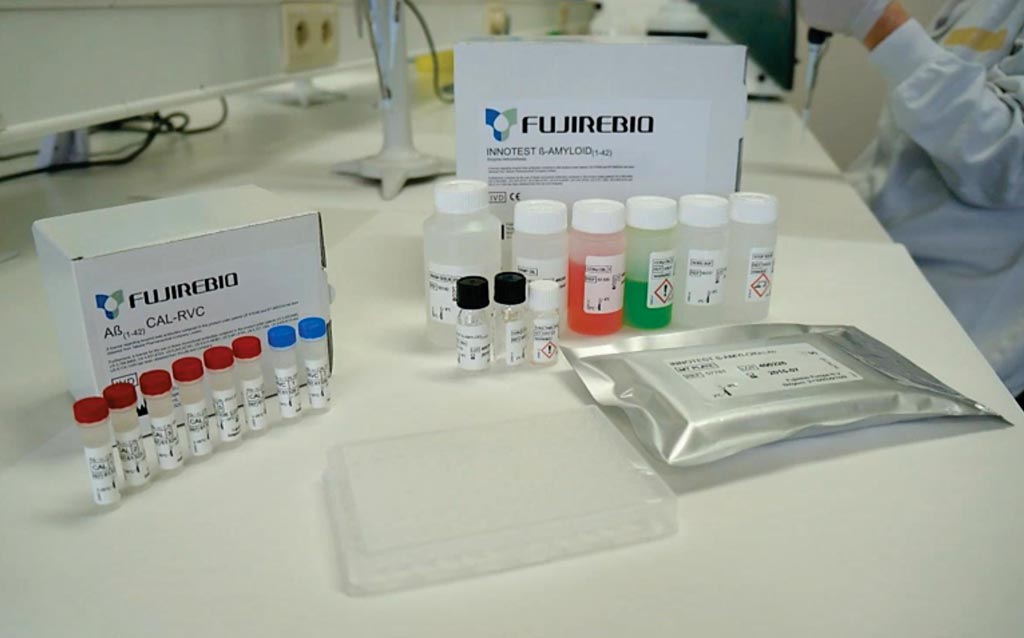New Immunoassays Measures Beta-Amyloid 42 in CSF
By LabMedica International staff writers
Posted on 30 Nov 2017
Cerebrospinal fluid (CSF) β-amyloid (Aβ) 42 and amyloid positron emission tomography (PET) have proved to have high diagnostic accuracy for Alzheimer disease (AD) years before the onset of clinical symptoms and are becoming an important part of the diagnostic workup.Posted on 30 Nov 2017
Several enzyme-linked immunosorbent assays (ELISAs) are commonly used for measurements of Aβ42 levels in CSF. In general, the precision of an immunoassay may be compromised by matrix interference when endogenous biological factors in the sample interact with the analyte of interest or nonspecifically bind to antibodies.

Image: The INNOTEST β-AMYLOID(1-42) is a solid-phase enzyme immunoassay for the quantitative determination of β-amyloid(1-42) in human cerebrospinal fluid (CSF) (Photo courtesy of Fujirebio Diagnostics).
An international team of scientists led by those at Lund University (Lund, Sweden) examined the concordance between CSF Aβ42 levels measured using five different immunoassays and visual amyloid PET analysis in a study involving 262 patients with mild cognitive impairment or subjective cognitive decline who had undergone [18F]flutemetamol-labeled PET from September 1, 2010, through December 31, 2014.
The team measured levels of CSF Aβ42 were analyzed using the classic INNOTEST and the newer modified INNOTEST, fully automated Lumipulse, EUROIMMUN, and Meso Scale Discovery assays. Concentrations of CSF Aβ were assessed using an antibody-independent mass spectrometry–based reference measurement procedure.
The scientists reported that found that the mass spectrometry-derived Aβ42 values showed higher correlations with the modified Aβ42-INNOTEST, Aβ42-FL, Aβ42-EI, and Aβ42-MSD assays versus the classic Aβ42-INNOTEST assay. Recombinant Aβ1-40 peptide partially quenched the signal in the classic Aβ42-INNOTEST assay. They found better concordance with visual [18F]flutemetamol PET status was seen for the classic Aβ42-INNOTEST assay versus the newer assays. When Aβ42-to-Aβ40, Aβ42-to-total tau, or Aβ42-to-phosphorylated tau ratios were used, the accuracies of the newer assays improved significantly.
The authors concluded that concentrations of CSF Aβ42 derived from the new immunoassays (modified INNOTEST, FL, EI, and MSD) may correlate better with the antibody-independent mass spectrometry–based reference measurement procedure and may show improved agreement with visual [18F]flutemetamol PET assessment when using the Aβ42:Aβ40 or Aβ42:tau ratios. The study was published on November 6, 2017, in the journal JAMA Neurology.
Related Links:
Lund University














